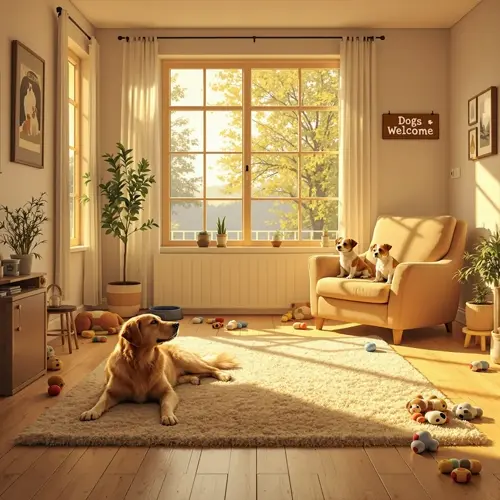Are round or square beds better?

Written by
Wang Jiahao
Reviewed by
Prof. Henry Webster, Ph.D.The best shape of dog bed (round or square) is determined completely by your dog's sleeping preferences. If the instincts compel curlers to have round beds for safety, stretchers need a rectangular space. Stomach-sleepers are best off in square beds that have bolsters. Observe habit patterns and then decide.
Round Bed Benefits
- High bolsters create nest-like security
- Circular shape supports curled positions
- Compact design conserves space efficiently
- Ideal for anxious or cold-sensitive dogs
Square/Rectangular Advantages
- Open space accommodates stretching positions
- Straight edges support side sleeping posture
- Modular bolsters allow customization
- Better for large breeds and stretchers
Selection Considerations
- Measure room dimensions for proper fit
- Prioritize observed sleep habits over aesthetics
- Combine shapes for multi-dog households
- Ensure orthopedic needs match shape features
Round beds offer protective benefits for curled-up sleepers. Their circular shape defines protective borders. High bolsters support heads and backs. This provision is suitable for toy-breed dogs or those with anxiety. My Pom will relax only within her round bed.
Square and rectangular bedding provides a freedom stretch for active or lazy postures. Straight borders allow for outspread legs. Open centers allow full stretch. This kind of bed is also best suited for large breeds and dogs in warm climates. A rectangle gives my Boxer the room he needs for his 'starfish' pose.
Take the room layout into consideration when selecting shapes. Round beds make efficient use of corners. Rectangular lines will line up nicely along a wall. Square selections are a good choice in the middle of a room. In all cases, measure your area before you make a significant purchase.
Orthopedic requirements impact form suitability. Round beds restrict placement options for joint support. Rectangular-shaped beds utilize contoured foam more effectively. Square beds provide appropriate pressure redistribution. Therapeutic aspects should be congruent with sleep habits.
Shape combinations are beneficial in multi-dog households. For security-seekers, use round beds. For stretchers, provide options in rectangular shapes. My two dogs have different preferences that require both types of shapes. This difference helps reduce competition over sleeping space.
Read the full article: Dog Bed Size Guide: Find the Perfect Fit

